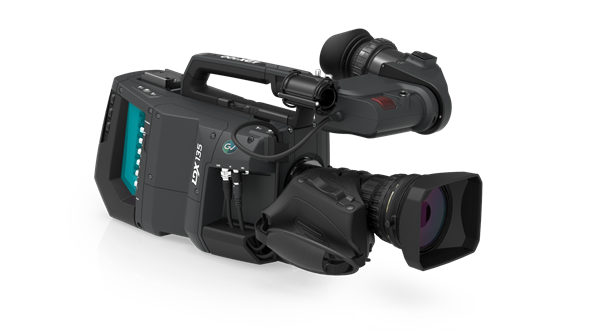Grass Valley LDX 135 Camera
E-CODE: P150K-
- New camera platform designed for extension into the future
- Simple, scalable multiformat image capture and distribution
- All-in-one camera with no separate base station required thanks to NativeIP
- Supports SMPTE ST 2110 standard as well as AMWA NMOS
- Up to five JPEG XS encoders may be enabled, reducing bandwidth requirements by 20 times
- Suite of inventory management features
- Extensive operator training not required
Product Details
Offering a lower entry price point within the LDX 100 series, the single-speed LDX 135 stretches production resources farther with features similar to the LDX 150, such as faster turnaround and configuration times, à la carte daily options, and UHD with HDR. For 3X high-speed operation, see the LDX 150. The high sensitivity (F11@2000 lux vs F9@2000 lux) of the LDX 135 with its three new Xenios imagers means that you get:
- Wider dynamic range in HDR mode
- Improved signal-to-noise ratio by reducing gain for cleaner images
- Greater depth of field by allowing smaller lens apertures for easier and better focusing
- JPEG XS high-quality low-latency video compression option
- Designed to reveal in detail the intensity and emotion behind fast-paced action and split-second decisions, LDX 135 NativeIP cameras use a new 2/3-inch Xenios imager to capture UHD and HDR images.
Just as compelling as its image capture capabilities is the camera’s redefinition of signal distribution. Born a network native, the camera is a self-contained IP endpoint with up to 100 Gb/s IP network connections for audio, video and control directly at the camera head that enable distribution of camera sources wherever they are needed on the network — without the delays inherent in sending signals to a separate control hub.
New topologies are possible for signal acquisition and distribution. The LDX 135 eliminates the requirement for traditional SDI interconnects, thereby enabling a high level of distribution flexibility including true REMI integration that requires less bandwidth because only the required signals are transmitted. Efficiency also goes up as multiple creative teams have immediate, non-conflicting access to all camera sources wherever it’s best for them to work. Collaborative production has never been easier.
Offering a lower entry price point within the LDX 100 series, the single-speed LDX 135 stretches production resources farther with features similar to the LDX 150, such as faster turnaround and configuration times, à la carte daily options, and UHD with HDR. For 3X high-speed operation, see the LDX 150. The high sensitivity (F11@2000 lux vs F9@2000 lux) of the LDX 135 with its three new Xenios imagers means that you get:
- Wider dynamic range in HDR mode
- Improved signal-to-noise ratio by reducing gain for cleaner images
- Greater depth of field by allowing smaller lens apertures for easier and better focusing
- JPEG XS high-quality low-latency video compression option
- Designed to reveal in detail the intensity and emotion behind fast-paced action and split-second decisions, LDX 135 NativeIP cameras use a new 2/3-inch Xenios imager to capture UHD and HDR images.
Just as compelling as its image capture capabilities is the camera’s redefinition of signal distribution. Born a network native, the camera is a self-contained IP endpoint with up to 100 Gb/s IP network connections for audio, video and control directly at the camera head that enable distribution of camera sources wherever they are needed on the network — without the delays inherent in sending signals to a separate control hub.
New topologies are possible for signal acquisition and distribution. The LDX 135 eliminates the requirement for traditional SDI interconnects, thereby enabling a high level of distribution flexibility including true REMI integration that requires less bandwidth because only the required signals are transmitted. Efficiency also goes up as multiple creative teams have immediate, non-conflicting access to all camera sources wherever it’s best for them to work. Collaborative production has never been easier.



